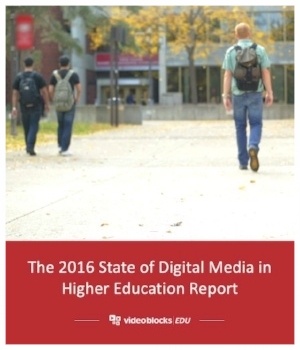
Last month we released our first State of Digital Media in Higher Education Report, which focused on gaining insight into how campuses are implementing digital technologies and what barriers, if any, prevented them from doing so. Our findings revealed two common trends and frustrations, noted by both educators and students alike, which we’ll be unpacking in a two-part series. In this first part of the series, we’ll examine the first frustration: Students, teachers, and staff all continue to be disappointed by the hurdles involved in locating and accessing digital resources.
In our survey, when asked to give details about the barriers that students and educators most often encounter, the biggest limitations came from the universities and campuses themselves. Whether due to a lack of funding, digital assets and supporting technologies, or needed updates to keep technologies current and accessible, both students and faculty agreed that schools were not doing enough to provide full access to these important resources.
For students, many of the biggest frustrations often center around having only limited access to university-provided resources. As one student put it, “my biggest frustration is not being able to use all of the programs in each computer center. It is frustrating having to seek out specific classrooms on campus to finish homework because not all the computers on campus have the necessary software.” Similarly, other students cited their inability to access these resources when off campus as a considerable barrier to using digital media in their coursework.
Still, an even larger issue for most students is not having enough digital resources on-campus from the start. Whether due to an absence of proper computing software or a dearth of available media assets, students noted that the biggest deterrent to using media in their work is the lost time and energy spent on locating the right tools when none are provided by their university. “I wish we had access to online databases of stock images to use in our graphics classes,” one student of design noted in the survey. “It is very difficult to find free content, and it is very hard to find the time to generate all of your own content in enough time to complete an assignment in the given time.” For this particular student, time and energy are not the only things lost because of a lack of resources—ultimately, the biggest disadvantage is the student’s inability to fulfill a creative and educational potential: “Often the end result [for these projects] is nothing like you envisioned.”
Teachers, too, share these concerns. In their own responses, educators noted that the lost time and energy put into tracking down and locating digital resources, even university provided ones, considerably disincentivizes the use of digital media in either their own work or their students’. More than that, educators frequently stated that their schools’ lack of support, either through funding or by providing crucial technological infrastructure, greatly hinder their ability to integrate technologies into the classroom. As one teacher noted, “the lack of up-to-date platforms for use in teaching tethers us to antiquated approaches.”
When put in the broader context of our world’s current media landscape, from cloud computing to the instantaneous streaming and downloading of media all over the globe, it’s not hard to understand why university-provided resources—especially ones which are only available onsite via computers and programs that are woefully out-of-date—can actually be seen as hindrances to both students and educators.
Despite these frustrations, there is still a broad desire for digital tools in the classroom, particularly ones supported by campus-wide funding efforts and technological infrastructure. Our survey found that regardless of barriers, students were most likely to use university-provided resources for the digital media in their coursework. While educators noted that they were most likely to use digital resources found on their own time independent of their schools, a significant number of teachers and administrators indicated that they still used university-provided digital assets as one of their primary resources.
How can universities resolve these barriers to access? One solution is our new U-Curate platform, in conjunction with our Digital Backpack. U-Curate is a centralized content management platform that allows faculty, students, and campus media designers to discover and download university-created footage. At its heart, we designed the platform to help universities more fully realize the potential and impact of their digital resources and assets. Too often campuses lack the digital architecture to connect the dots between their already existent media assets and the offices, classrooms, and labs that would most benefit from that content. U-Curate answers this problem by surfacing and distributing university creative media through the platform’s powerful content organization system.
Through U-Curate, universities will be able to select and upload their own footage into a secure platform, which will be made searchable and available to all authorized users within each university’s individual media library. Faculty, students, and staff can then easily browse, discover, and download their campus’ unique media for their creative digital projects. This makes formerly unavailable and disparate collections of university footage exclusively available and readily accessible to all authorized community members.
To learn more about student and educator frustrations with digital assests and technology in the classroom, download our 2016 State of Digital Media in Higher Education Report.


